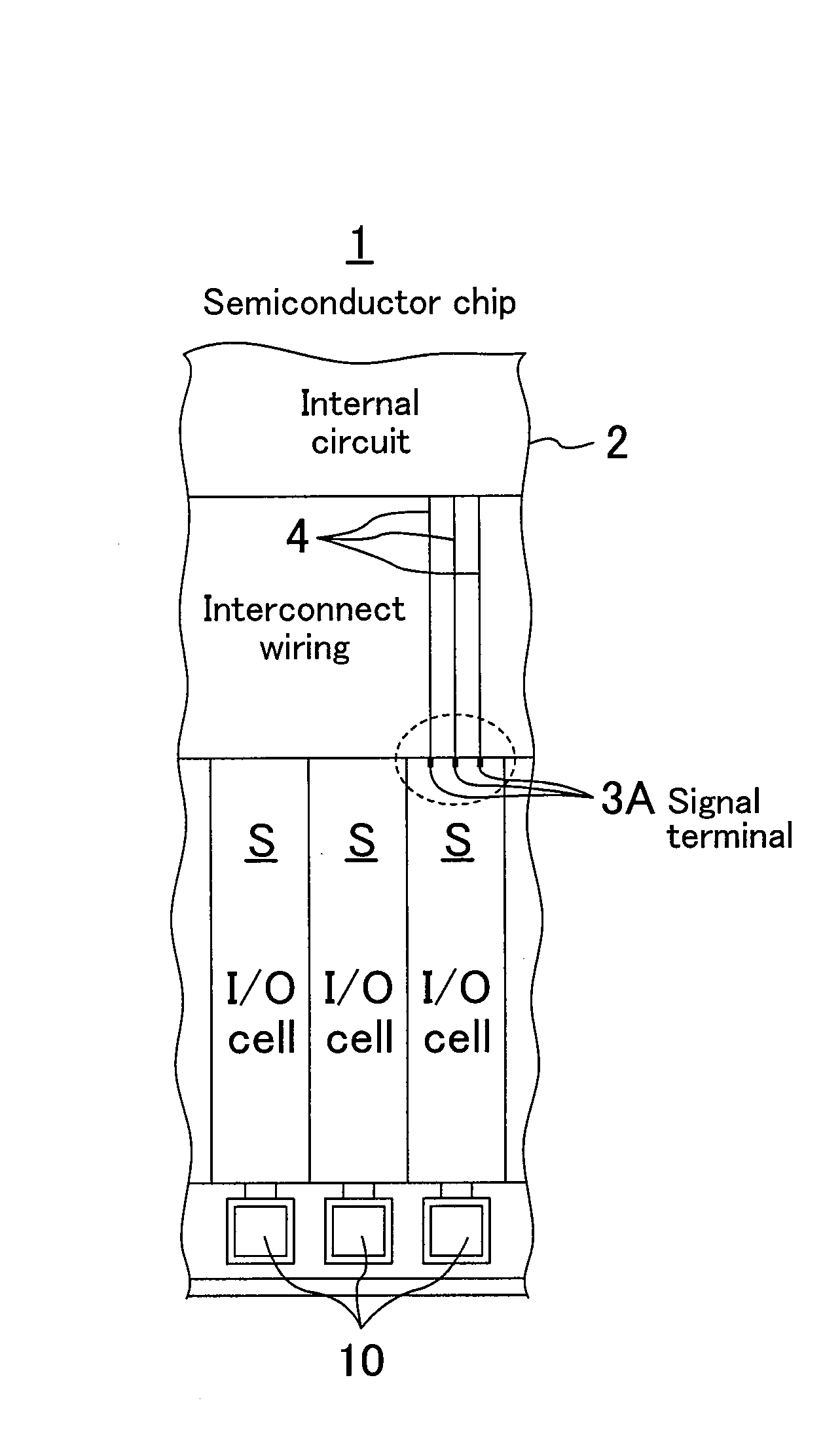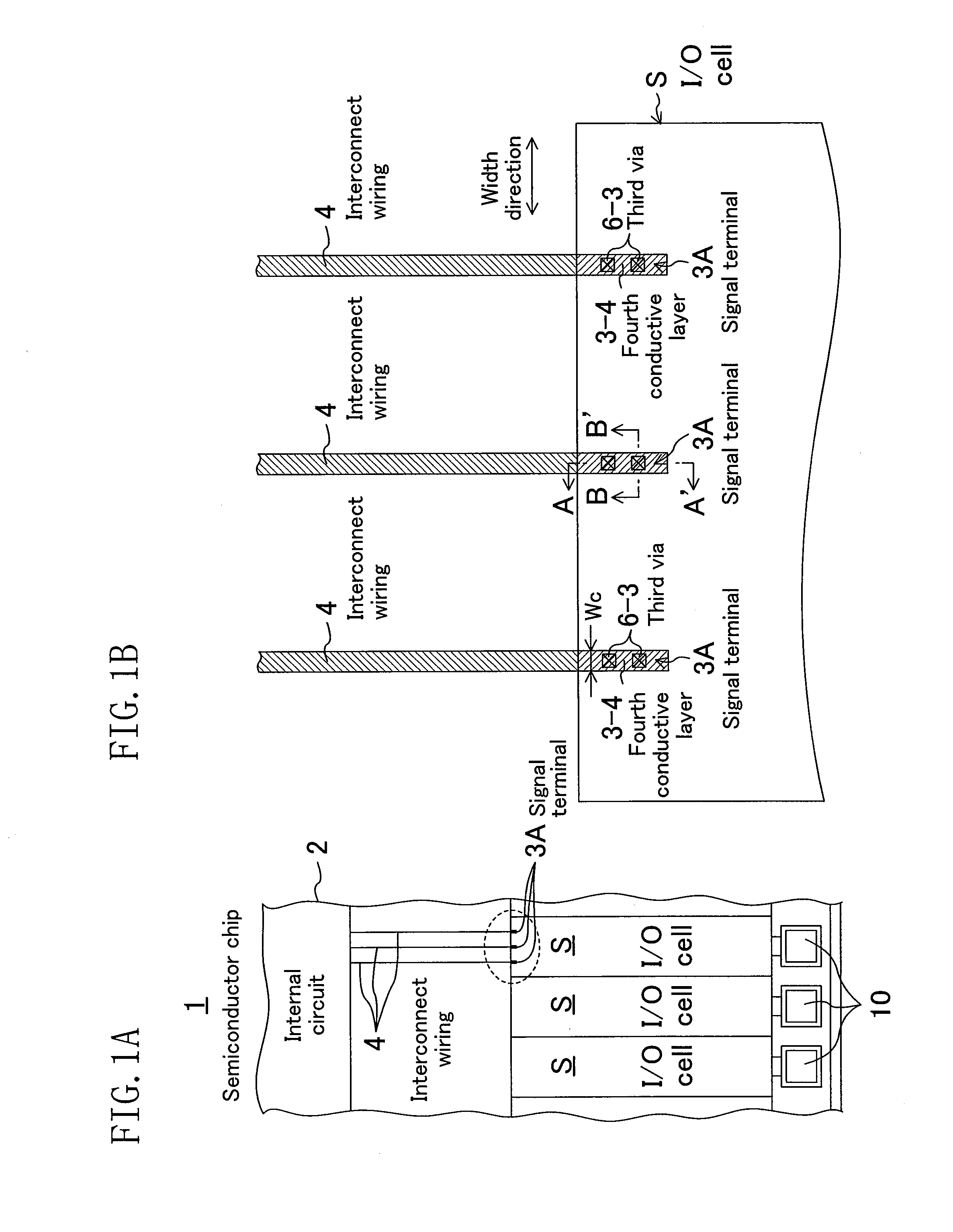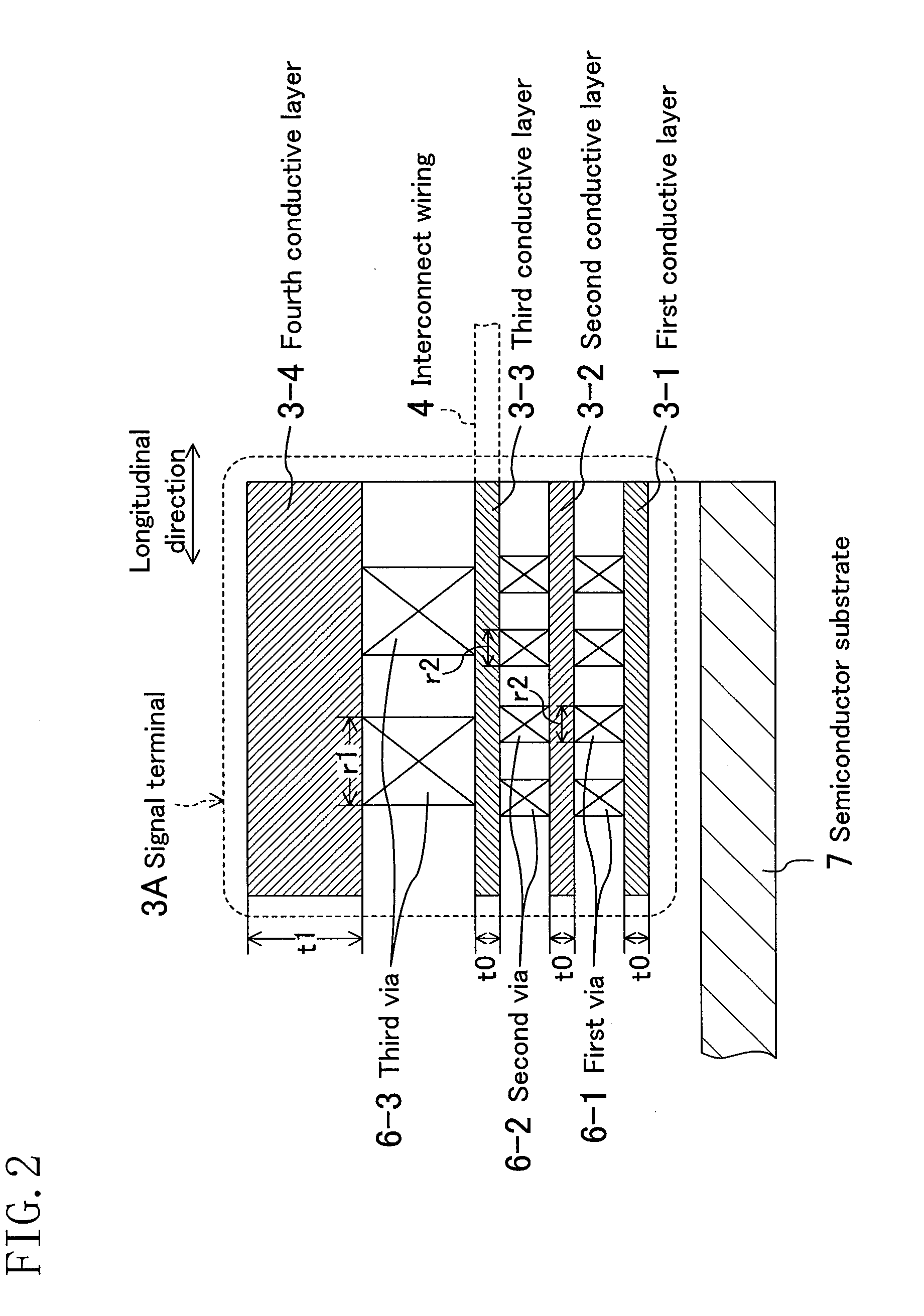Semiconductor integrated circuit and design method of signal terminals on input/output cell
a technology of integrated circuits and signal terminals, applied in the direction of instruments, program control, basic electric elements, etc., can solve the problems of interconnection wiring, open failure of vias b, and limitations on the layout of vias b>, so as to suppress the increase in the area of semiconductor chips, suppress the increase in the cost of semiconductor integrated circuits, and eliminate or reduce the migration of atoms
- Summary
- Abstract
- Description
- Claims
- Application Information
AI Technical Summary
Benefits of technology
Problems solved by technology
Method used
Image
Examples
first embodiment
[0044]FIGS. 1A and 1B are plan views showing a semiconductor integrated circuit according to a first embodiment of the present invention.
[0045]Referring to FIG. 1A, a semiconductor chip 1 is a semiconductor integrated circuit employing a standard cell architecture. An internal circuit 2 including a signal processing circuit, etc., is provided within the semiconductor chip 1, with many I / O cells S being arranged in parallel to one another along the periphery of the semiconductor chip 1. Each I / O cell S is connected to the internal circuit 2 by interconnect wirings 4. Signals are input to, and output from, the I / O cells S via an electrode bump 10, which is provided at the peripheral end of each the I / O cell S. Each cell S is not limited to a cell capable of both inputting and outputting signals, but may be a cell only capable of either inputting or outputting signals. Such input cells, output cells and input / output cells are herein referred to collectively as I / O cells.
[0046]The conne...
second embodiment
[0058]A second embodiment of the present invention will now be described.
[0059]FIG. 6 is a cross-sectional view taken in the direction corresponding to line B-B′ of FIG. 1B (i.e., a cross-sectional view in the width direction of the signal terminal 3A), showing a semiconductor integrated circuit according to the second embodiment of the present invention. The present embodiment differs from the first embodiment shown in FIG. 3A in that a plurality of (two in the illustrated example) each of the first and second vias (the vias other than the largest-diameter via) 6-1 and 6-2 are arranged in the width direction of the signal terminal 3A.
[0060]Although only one each of the first via 6-1 and the second via 6-2 is provided in the width direction of the signal terminal 3A in the example shown in FIG. 3A, the diameter of the first via 6-1 and the second via 6-2 is smaller than that of the third via (the largest-diameter via) 6-3, and therefore a plurality of such vias may be provided in th...
third embodiment
[0062]A third embodiment of the present invention will now be described.
[0063]FIG. 7A is a cross-sectional view taken in the direction corresponding to line B-B′ of FIG. 1B (i.e., a cross-sectional view in the width direction of the signal terminal 3A), showing a semiconductor integrated circuit according to the third embodiment of the present invention. The present embodiment differs from the first embodiment shown in FIGS. 3A to 3C in that only the third and fourth conductive layers 3-3 and 3-4 are the broadest conductive layer, with the first and second conductive layers (conductive layers other than the broadest conductive layers) 3-1 and 3-2 being formed with a width smaller than that of the third and fourth conductive layers (the broadest conductive layers) 3-3 and 3-4.
[0064]Specifically, the first and second conductive layers 3-1 and 3-2 are formed with the same width as the third and fourth conductive layers 3-3 and 3-4 in the example shown in FIG. 3A. In contrast, in the ex...
PUM
 Login to View More
Login to View More Abstract
Description
Claims
Application Information
 Login to View More
Login to View More - Generate Ideas
- Intellectual Property
- Life Sciences
- Materials
- Tech Scout
- Unparalleled Data Quality
- Higher Quality Content
- 60% Fewer Hallucinations
Browse by: Latest US Patents, China's latest patents, Technical Efficacy Thesaurus, Application Domain, Technology Topic, Popular Technical Reports.
© 2025 PatSnap. All rights reserved.Legal|Privacy policy|Modern Slavery Act Transparency Statement|Sitemap|About US| Contact US: help@patsnap.com



